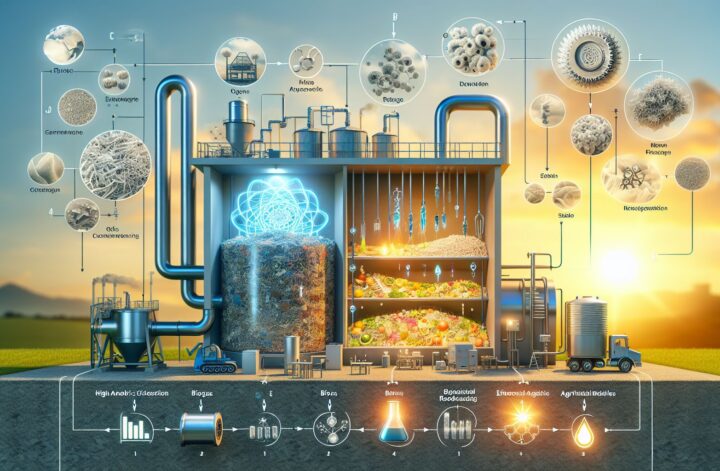In the astonishingly complex world of waste management and renewable energy, one solution often overlooked is the process of high-rate anaerobic digestion (HRAD). In this article, we will delve into the intricacies of this technology, its benefits and drawbacks, as well as its role and potential in the future of waste-processing and energy production landscapes.
What is High-Rate Anaerobic Digestion?
High-rate Anaerobic Digestion is an advanced waste management technology that accelerates the decomposing process of organic matter into useful end products. With anaerobic digestion, decomposition occurs in the absence of oxygen, yielding a mixture of carbon dioxide and methane, collectively known as biogas[^1^]. HRAD, on the other hand, is a faster and more efficient variant of standard anaerobic digestion designed to handle higher volumes of organic waste and provide a faster hydraulic retention time (HRT).
The HRAD process involves several stages: hydrolysis, acidogenesis, acetogenesis, and methanogenesis. The solid organic materials are first broken down into simpler sugars, amino acids, and fatty acids during hydrolysis. Acidogenesis then converts these simpler constituents into volatile fatty acids and alcohols. Acetogenesis converts these compounds into hydrogen, carbon dioxide, and acetic acid. Finally, Methanogenesis completes the process by transforming these constituents into biogas[^2^].
The Advantages of High-Rate Anaerobic Digestion
One significant advantage of HRAD is its efficiency. The use of optimized conditions enables HRAD systems to decompose and convert organic waste into biogas at faster rates. This feature makes HRAD an ideal solution for waste management in settings where large volumes of organic waste are generated, such as in large farms, food processing factories, and municipal sewage treatment plants.
HRAD’s efficiency also translates to energy production. The biogas produced during the digestion process is a renewable source of energy that can be harnessed for heating, electricity generation, and even as a fuel for vehicles. In addition, the residue left after digestion, known as digestate, is rich in nutrients and can be used as a soil conditioner or fertilizer[^3^].
Furthermore, HRAD contributes significantly to greenhouse gas reduction. By capturing the methane produced during decomposition—a potent greenhouse gas—HRAD helps to reduce the release of these gases into the atmosphere.
The Challenges and Potential Solutions in High-Rate Anaerobic Digestion
While HRAD has impressive benefits, it also poses several challenges. Among these are the investments required for the system’s setup, the need for careful monitoring to prevent system upset due to inhibition (e.g., ammonia toxicity and sulfide toxicity), and the requirement for pre or post-treatment processes to remove trace elements.
Still, these challenges can push forward innovative solutions. Investing in research and development can lead to more cost-effective digesters. Through continuous technological advancements in monitoring systems, issues such as toxicity and inhibition can be detected early and addressed promptly.
The Future of High-Rate Anaerobic Digestion
With growing awareness of and demand for sustainable waste management systems and renewable energy sources, the role of HRAD will undoubtedly become increasingly significant. This process offers not just a means of handling organic waste, but also a viable, renewable source of energy and a way to mitigate the impacts of greenhouse gases.
Overall, high-rate anaerobic digestion embodies a synergistic approach to waste management and energy production. By transforming waste into resources, it aligns perfectly with the principles of a circular economy – an economic system aimed at eliminating waste and promoting the continual use of resources.
[^1^]: “What Is Anaerobic Digestion (AD)?”, U.S. Environmental Protection Agency
[^2^]: “Anaerobic digestion of organic substrates for biogas production: A review”, Energy conversion and management
[^3^]: “Biodegradability of agricultural plastic films: A critical review”, Journal of Polymers and the Environment




